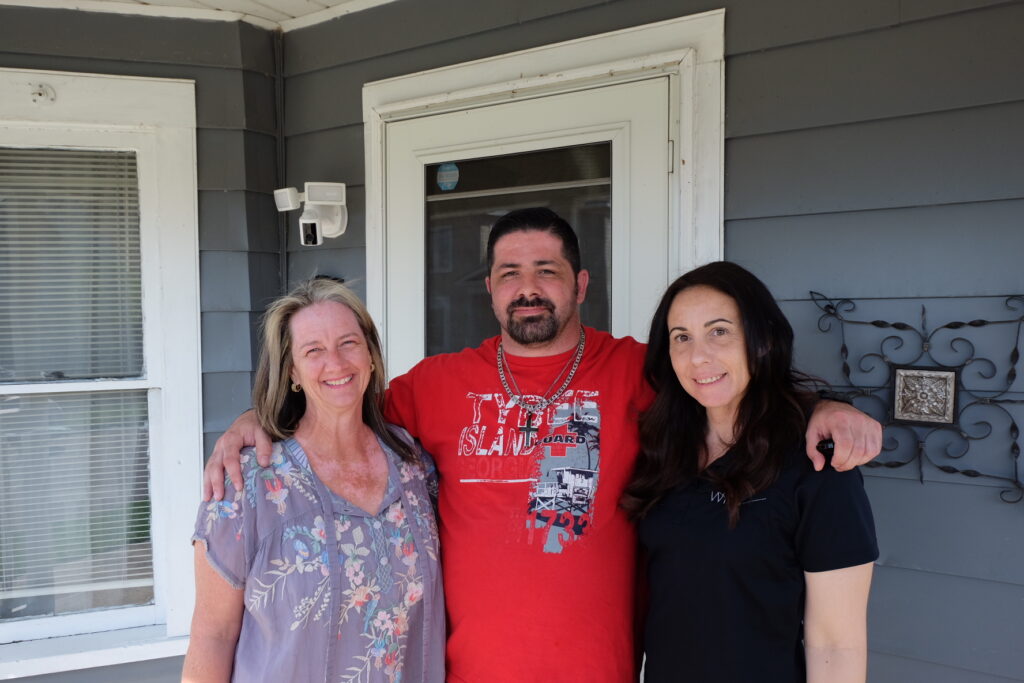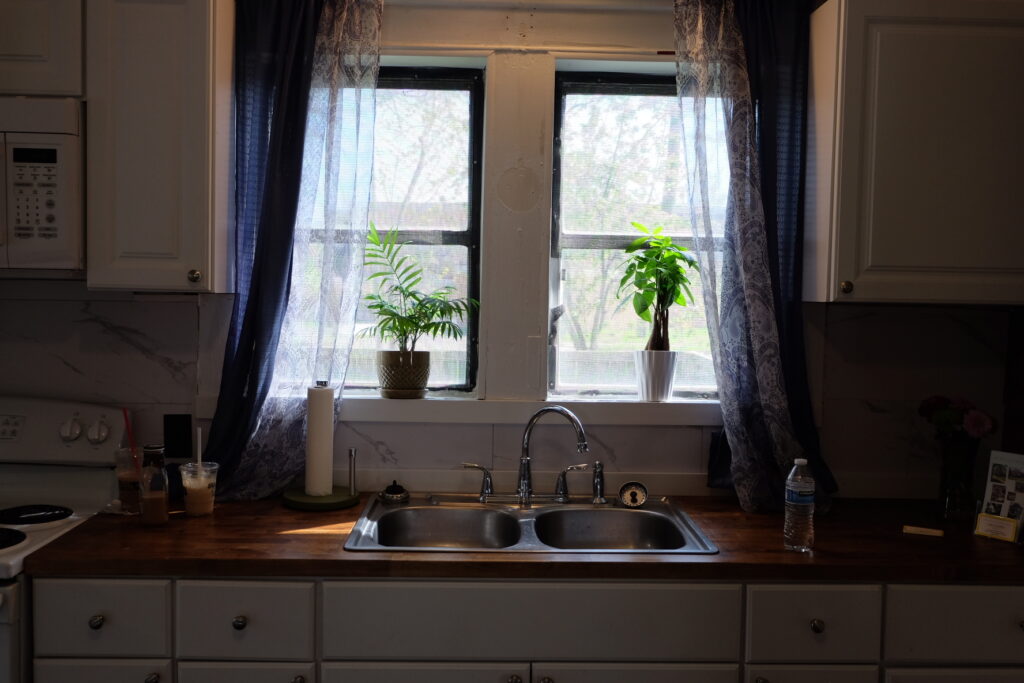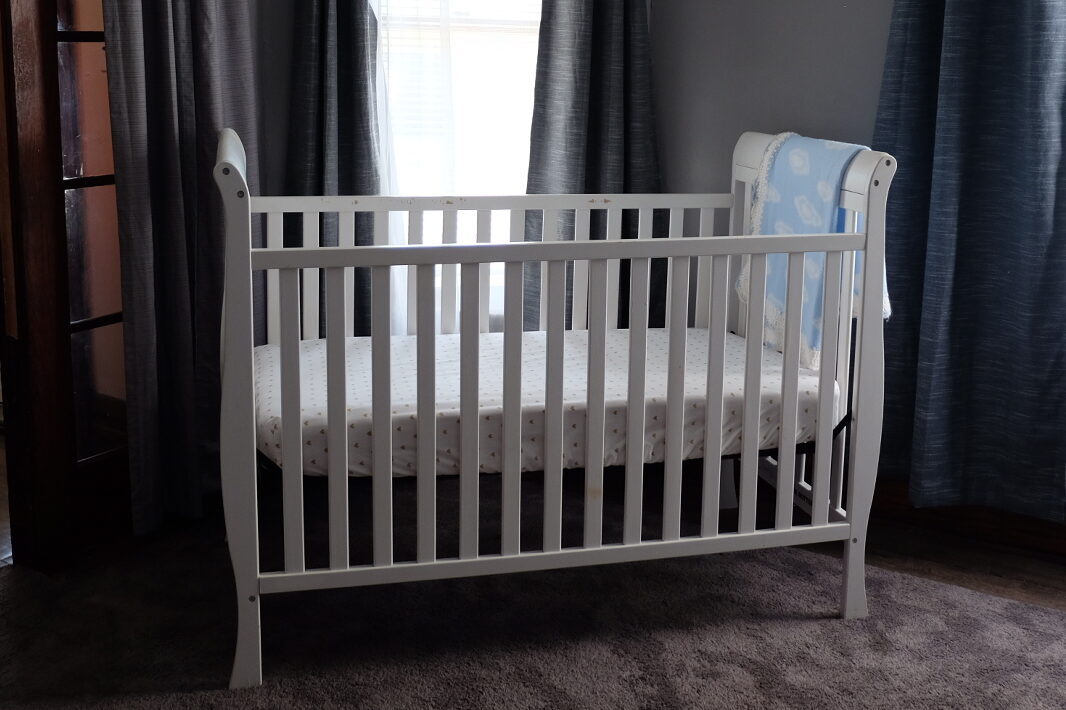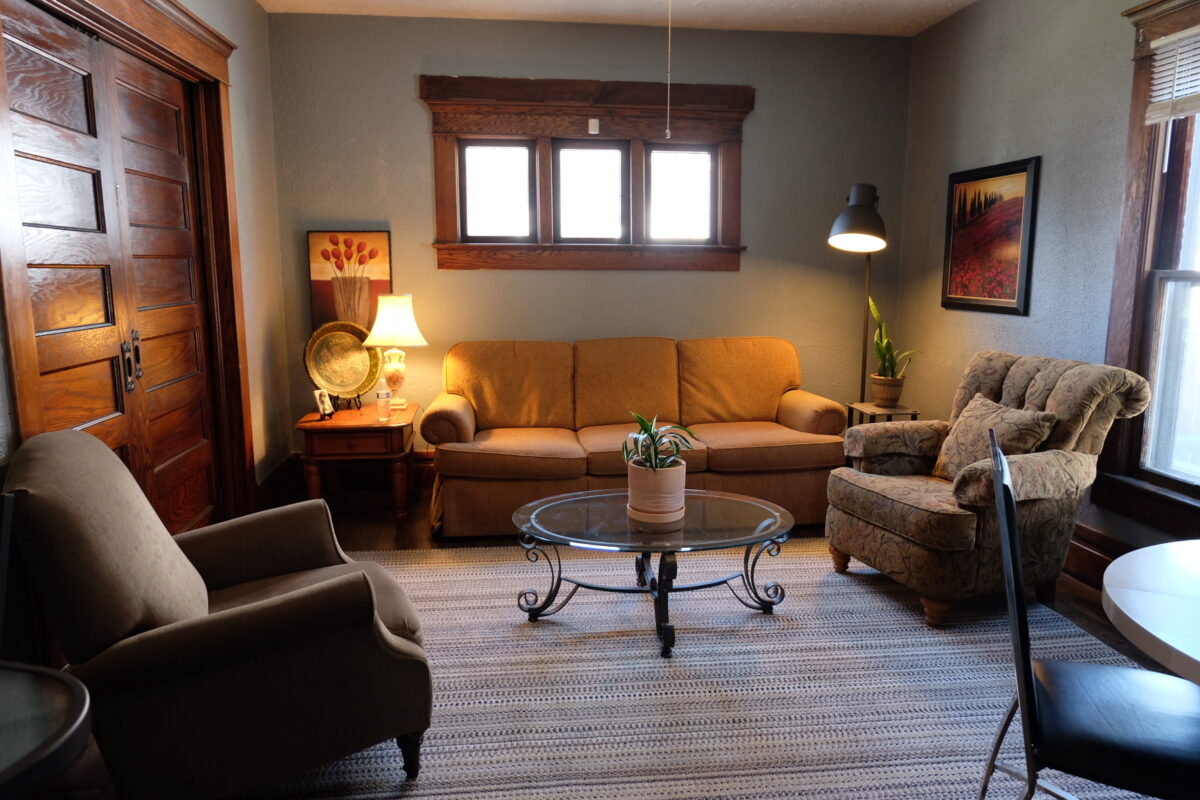Ten women gathered in the dimly lit living room around a 40 pack of Tim Hortons Timbit donut holes talk over each other but miraculously land on the same page: The gutters at the house on Awakening Lane need to be cleaned.
Everyone here today is a resident of Whole Living Recovery, a safe and sober residential option for men and women in Newark who are suffering from substance abuse disorders.
Whole Living Recovery has been providing not just beds and stability for those who need it for more than six years, but the nonprofit organization also is forming a community and family for those who don’t have those connections. The organization had established four houses in Newark since 2017, and in April, it opened its fifth location. The new house is its third home for women only, called North Lane.

Stephanie Vanbibber, administrator and case manager for Whole Living Recovery, sighs and types on her laptop, adding the gutter-cleaning request to her ever-growing to-do list.
This is her second house meeting today. Earlier, she was at the men’s house a few blocks away, and she has another meeting after this one. Some things never change, ever since she was a resident in one of the houses in 2018.
But one thing that has changed in Licking County is the number of overdose fatalities. The death toll is rising.
That makes safe and effective treatment options for people with substance use disorder such as Whole Living Recovery more important than ever, Vanbibber says.
The Licking County Overdose Fatality Review Annual Report, conducted by the Licking County Health Department, says that, in 2022, there were 58 accidental overdose fatalities in the area. That’s a 23% increase from the previous year, and 45 of those 58 cases involved opioids. And 39 of them involved fentanyl.
The report by the county Overdose Fatality Review Committee recommends that to reduce overdose fatalities and overall incidents, the county not only needs to increase access to overdose prevention and education materials but also expand community outreach.
That is just what Whole Living Recovery aims to do.
“What’s your goal this week?” Vanbibber asks two-month resident Shay to kick off the meeting.
“To really think about the question on this step,” responds Shay, “What does disease look like?” She continues to talk about her son, who is recovering from being sick, and her mom, who is now starting to struggle with health complications.
“Can’t catch a break,” says Meegan, a 15-month resident and house manager at the Recovery Lane location.
The rest of the group responds sympathetically, offering support and prayers.
That’s the case until a gray and white cat appears outside the living room window, and the group erupts in giddy gasps.
“We got a neighborhood kitty!” someone yells, and everyone shouts out what to call it.
Although they might disagree on the best name for the passing stray, the respect and admiration these women have for each other is not only clear but also vital.
* * *
From the East side of Newark, North Lane is within walking distance of services that residents might need, such as probation offices, family services, and other Whole Living Recovery homes, as well as downtown businesses.
The older two-story home opens up to a cozy entryway and wooden staircase that leads to the second-floor bedrooms. The first floor has a kitchen with white cabinets and wood floors, and a living room full of plush seating and warm lighting. Outside, a canopy, draped in decorative lights, shades an outdoor seating area. The spacious backyard is a yellow glow of blooming dandelions and sunshine. The swing set and picnic table inside the wooden fence around the yard are just a couple of the aspects that made this location so appealing.

Kerry Penland, founder and director of Whole Living Recovery, said that when scouting out new locations, safety and accessibility are two important factors. The third is whether the place actually feels like home.
“And when Stephanie (Vanbibber) and I first walked in here, we knew it felt right,” said Penland.
Penland is an Entrepreneurship Coach at Denison University and a Columbus resident. She started Whole Living Recovery as a response to Licking County’s increase in substance abuse disorders and lack of recovery options. Initially, the organization aimed to only serve women, but as the demand for safe recovery housing increased, her business expanded.
To be accepted into a Whole Living Recovery house requires at least 30 days of sobriety from its residents, as well as work with a previous treatment facility. Residents pay rent and the non-profit also receives additional funds from donors to maintain the homes But the number one thing that Whole Living Recovery looks for in its residents is their commitment to recovery.
“What we really try to do is set people up to be in an environment where everyone there is putting their recovery first,” Penland said. “We want them to want to be here; that’s the only way this works.”
Between the five locations, Whole Living Recovery houses anywhere from 25 to 35 residents at a time, and they stay anywhere from three months to two years.
“Some people come in with the intention of moving out within a couple of months because they have a plan,” Penland said. “And some people don’t have that plan. Because of the housing situation, there is nowhere for them to go.”

Newark’s lack of affordable housing is another factor that makes Whole Living Recovery an effective recovery option. The median listing price has increased over 44% compared to March 2022, according to The Newark Advocate’s Licking Country, Ohio Real Estate Market Report.
While in the program, most members find jobs, get drivers licenses or IDs, or sometimes cars, with the help of Vanbibber. When residents move out, Whole Living Recovery makes sure they are moving into safe independent living, whether in their own apartment or with family.
Vanbibber expects North Lane to be at full capacity, with six residents, by mid-May. More than half of these spots already have been filled – three by senior residents from other Whole Living Recovery homes. Shay, along with 16-month resident Lindsay, will relocate to the new house. The house manager from the Recovery Lane location, 17-month resident Mallory, also will assume the same position at North Lane.
Soon, in addition to two new members of the Whole Living Recovery community, North Lane also will welcome a mother and a daughter into its family.
* * *
Vanbibber wraps up the house meeting by turning her attention to Khara, who is sitting in a corner of the room. She is wearing flannel, and her hair is up in a ponytail, with bangs covering her forehead and framing her face.
“Last but not least, what’s your goal this week?” Vanbibber asks.
Khara has been a resident at Recovery Lane for only a couple of weeks, and it’s her first time at a house meeting. To calm her nerves, she rubs her palms back and forth across her knees.
“Can my goal be that I want to apply for privileges and get the car in my name?” she asks.
“Why don’t you just pick one,” someone suggests. “Because life happens, you know? Shit happens.”
Khara agrees to focus on the car for the week. It’s feasible. Realistic. She shares that her newest accomplishment was seeing her teenage daughter the day before. It was the first time she had seen her since Thanksgiving.
“I’m just so proud of her,” Khara says once, then again and once more. “And I just want her to be proud of me, too.”
“You’re doing great, really great,” Vanbibber says with a reassuring look over her laptop screen, her gaze serious and sincere.
Although everyone in the room has a different story and is at different stages in their recovery, they all hope to do better, not only for others but also for themselves.
“Most importantly,” says Khara, “I just need to meet myself where I’m at.”
Selah Griffin writes for TheReportingProject.org, the nonprofit news organization of Denison University’s journalism program, which is funded in part by the Mellon Foundation. thereportingproject@denison.edu

